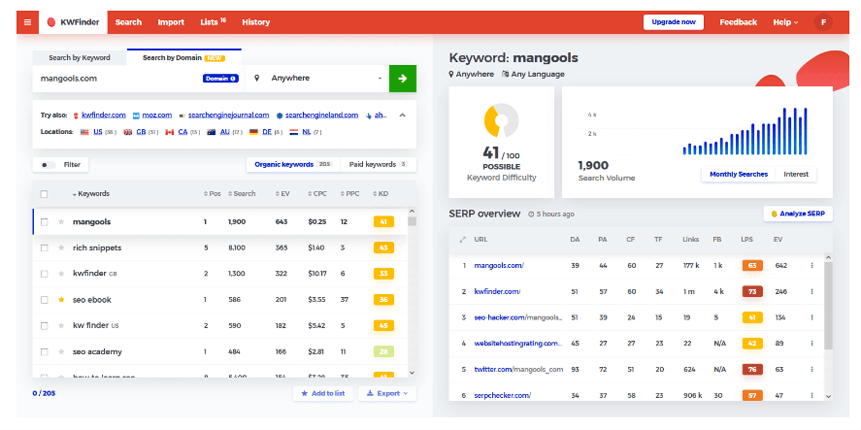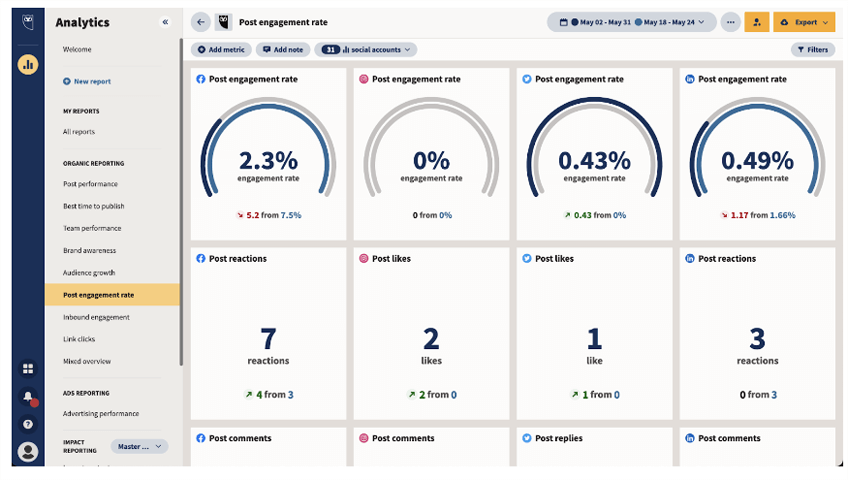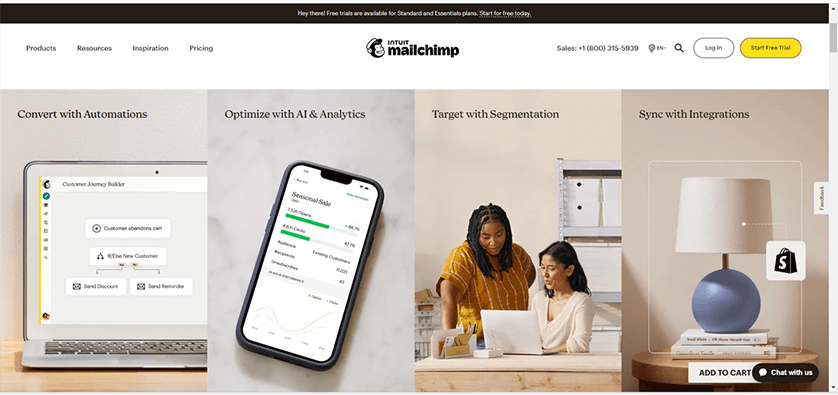Have you ever shared what you thought was a great idea and were surrounded by naysayers? Maybe it was for an innovative product or a new marketing campaign. And the responses all sounded a little bit like:
“Hasn’t that been done?”
“I just don’t see the point.”
“What we have now is working, so why change?”
Of course any organization needs to spend money wisely. So how do you get people on board and persuade them your idea is worth sinking capital into?
The answer is to back it up with research and data that spells out the details, answers all the questions and quells the anxieties. It’s to present a report that evaluates the project from various perspectives, considers alternatives, digs into relevant data and persuasively justifies the proposed solution. In short, it’s to present a business case.
A business case is the ticket to driving enthusiasm behind an initiative or project. It’s key to getting the biggest skeptics on board, keeping the company focused on work that matters, and positioning a project for success.
Except a business case has so many components and putting one together is so much work! No need to worry; in this post, we’re going over how to create one, what to include in it, and what an example of a business case might look like.

Definition & Purpose of a Business Case
Just like the suitcase you pack before setting out on a journey, the business case is one central component of the planning stage in end-to-end project management. It allows a project’s execution to run smoothly. Let’s start out by defining a business case, clarifying its purpose, and comparing it to other documents created during a project’s planning stage.
A business case, according to the project management glossary, is “A documentation of the potential outcomes of a new project, including benefits, cost, and effects. It shows the reasoning for starting the project.”
A business case provides a financial justification for a project. It outlines the opportunity of a project or endeavor in terms of the financial benefits it provides. And it doesn’t only focus on ROI, but also identifies the thriftiest approach to allocate resources, capital, and to spend marketing dollars.
A second purpose of the business case is to provide the entire team an understanding of the business acumen behind the project. Oftentimes, skilled workers aren’t too focused on the bottom line, and the business case gives them a peek inside the leadership’s perspective on a project.
As the business case includes in-depth research into all aspects of a project, it also serves as a tool to evaluate various approaches and determine a best-fit solution.
While a business case oftentimes is written for a specific project, it can also serve simply to establish a unified vision around a company’s mission.
Some examples for a business case might include:
- A new product
- New office buildings in a new city
- A new marketing plan for current services or products
- Implementing a new software
- Repairing or remodeling the office building
How does a business case compare to a business plan and a benefits management plan?
A Business Plan is a company’s strategy for success. The document, often planned or written with the help of business plan consultants, focuses on the entire organization and includes its growth strategies with a timeline. A business plan’s central function is attracting outsiders to invest in the organization. It encompasses many aspects of an organization, including its operations, marketing, brand, and overall
Whereas a business case only focuses on one project or campaign and generally is considered an internal document. It also narrows its focus to those areas that affect the financial outcome of a project.
A Benefits Management Plan focuses on the strategy of a project or initiative, and identifies its strategic benefit. Maybe the aspiration is to break into a new market, to build a brand or image, or to establish a presence in a new city or location.
Whereas a business case answers the financial “why,” and calculates the ROI for each of these projects, the benefits management plan answers the strategic “why.” It identifies how a new market or new office location might affect the brand and opportunities to serve new clients.
While each of these documents serve a distinct purpose, they all lay a foundation for a project. They ensure that a project makes sense from a variety of perspectives, and is executed with success.
With these definitions and clarifications under our belt, let’s go into the steps to creating a business case.

7 Steps to Create a Business Case
The research required for a business case varies depending on the nature of the project, but oftentimes the process is similar. Here are the steps to take when putting one together.
Step One: Research the Market
The preliminary step for launching a new product or campaign is to know the market. What are its needs, how are they being met, and where are there any gaps?
For a marketing campaign, this would mean identifying how to reach the customer, where they hang out online, and how to engage with them and turn them into loyal customers. For a product, it means digging into data around the consumer and his or her habits. This is the realm of a good product manager.
Step Two: Study the Competition
The next step is to look into the competition. This provides valuable insights. A thorough evaluation of the competition provides direction in both what to do and what not to do.
This research means looking at how the competition is addressing the needs of the market, and then identifying alternative means.
Step Three: Compare Financial Approaches
Generally, there’s more than one way to skin a cat. A business case delves into various approaches to a project in order to determine a path that makes the most sense. This may mean researching various contractors, equipment options or softwares, then comparing the strengths and weaknesses of each.
Step Four: Solicit Stakeholder Feedback
It’s necessary to evaluate a project from all angles in order so that every perspective has been considered. Talking to various stakeholders ensures that all relevant contributions have been considered and compiled within the business case.
Step Five: Consult Subject Matter Experts
Depending on the nature of the project, seeking expertise may well be in order. This is particularly the case if the project ventures into unknown territory. If the plan is to build offices in a new city, then familiarize yourself with the local economy by talking with other business owners. If it’s to launch a new marketing campaign, then study those who’ve utilized similar methods, and solicit their council. Rather than learn everything on your own, the knowledge of others can help to lay some of the foundation.
Step Six: Do a SWOT Analysis
Risk management is a component to any successful undertaking. A SWOT analysis serves to unearth all of the project’s strengths, weaknesses, opportunities and threats beforehand.
Step Seven: Synthesize
This final step entails putting together all of the research. Just like assembling the pieces of a jigsaw puzzle, it entails compiling data and analyzing it. At this point, a clear picture should emerge around the implications of various approaches, and perhaps even a preferred method becomes apparent.
After all of this research, you’re ready to write the executive summary.

9 Things to Include in a Business Case
The make-up of a business case depends on the industry and the size and scope of the project. Some are lengthy documents while others consist only of a few pages. However, the skeleton of a business case is consistent across the board. Let’s briefly summarize nine things most any business case would include.
1. Executive Summary
The executive summary is prepared last, after all of the research and analysis is complete. However, it prefaces the entire business case.
The executive summary outlines key findings as succinctly as possible. This may include a list of the project’s benefits, its costs, the ROI, and the payback period. All of the subsequent pages support and dig further into the contents of the executive summary.
2. The Business Opportunity or Problem
Just after the executive summary, a business case outlines its objective, be it an innovative product, a solution to a problem, an initiative or something else.
It clarifies the situation in its current state, and the desired outcome. It also clarifies the relevance of the project. Is it going to boost sales? Improve customer service? Strengthen the company culture?
And finally, it clarifies how the project aims to close the gap between the current state and the desired future state.
3. Alternative Products and Solutions
A strong business case includes an in-depth presentation of alternatives to the project or initiative. Perhaps the alternative is simply to leave things as they are, or it may be to pivot in another direction. This may include feasibility studies that uncover the strengths and weaknesses of various alternatives.
Carefully laying out all the alternatives presents a strong argument to back the preferred solution.
4. Recommended Solutions
When a project manager feels that a certain project is clearly the correct path forward, the business case includes a recommendation. It also includes quantifiable criteria that determines when the objective has been met, as well as all of the resources (labor, material, office space) required for the initiative.
However, a recommendation may not be necessary in every business case. Sometimes a business case simply presents the pros and cons of various initiatives, and then the task becomes to choose one and chart a path forward.
5. Market Analysis
A thorough evaluation of the market fashions a strong business case. This includes the following:
-
- Competitor Analysis: What is the competition’s marketing message, who are they reaching, how have they solved the problems, and where are the gaps or space for improvement?
- PESTEL Analysis: A political, economic, social, technical, environment, and legal analysis of the problem or project. For example, a PESTEL analysis considers any of the compliance regulations surrounding the issue or project.
6. Marketing Plan
A business case outlines how to pitch a new product or service to prospective customers. It includes research into the target market and outlines a long-term and short-term vision.
7. Financial Analysis
Most centrally, a business case includes a financial analysis. This supplements any financial information in the executive summary and may include estimates of cash flow and calculations of the ROI, the payback period and the NVP. It also covers things like upfront costs and operational costs.
8. Assumptions
Generally, a business case hinges on several assumptions, and these need to be included in the assessment. Perhaps it assumes that a certain software will be accessible to the entire team, or that a certain technology will be relevant at the time of execution. Things like the price of materials are also assumptions, and they may fluctuate depending on the market conditions. All these assumptions factor into the veracity of the conclusions.
9. Timeline
And finally, a business case includes a rough timeline of the project, including significant milestones.
And this summarizes some of the key components to a business case. With this foundation under our belt, let’s move onto an example of a business case.

Examples of a Business Case
Let’s consider a business case for a clothing company, Maureen Fisher, that designs clothing for middle age women, and is considering tapping into the twenty something market. The company believes that sales will increase by 20% with this initiative. They will need to hire new designers and launch a new marketing campaign.
Executive Summary
After a thorough analysis, Maureen Fisher has determined that launching a line for twenty-something professional women will serve to grow the brand. Additionally, this launch will put an end to stagnant growth and increase revenue by 20% after five years. The initial investments required will be paid back within three years. The subsequent documents support and further explain these assertions.
The Business Opportunity or Problem
Maureen Fisher has long felt that it needs to branch into new markets. The possibilities have been deliberated for several years now, and it’s time to make a decision. Stagnant growth for the past five years is due in part to a failure to reach new customers. Launching a new line to twenty-something women will increase the company’s visibility. Turning these customers into loyal customers will strengthen the company’s longevity.
Alternative Products and Solutions
Maureen Fisher has also considered launching clothing lines for children and for men. However, as the company has already established a strong brand recognition as a clothing company for women, we feel that launching a twenty-something line is the most feasible solution.
A children’s or men’s line would require hiring an entire new line of stylists and designers.
Maureen Fisher could also simply continue with its current line. However, it believes that as its current customers age, it needs to tap into new markets in order to revive stagnant growth.
Recommended Solutions
After much research into the clothing market for young women, and comparing it to alternatives, we feel that this new line for young women is the solution toward growing the business and building the brand.
While this decision will require new marketing initiatives and a new line of stylists, we believe that these are the only significant costs.
Market Analysis
We’ve analyzed the competition. Our chief rival, Blue Ribbon Clothing, continues to dominate the clothing market for women over 50. The clothing market for younger women is in flux, with tried-and-true brands getting replaced by up-and-coming ones. We believe that this flexibility in the younger market provides us with an opening to make a strong debut with younger women.
Marketing Plan
In order to reach a younger market, we will pivot our marketing campaign into popular social media platforms. We plan to hire a team of experienced marketers who know the target market well. In the long term, we believe that a content marketing plan that pitches the ethos of the brand to women will develop into loyal brand advocates.
Financial Analysis
The principal costs to develop a new line include: a new marketing team, manufacturing costs, and design costs. Over five years, we believe this new line will increase revenue by 20%. We have calculated that the ROI for this investment to be 200%. See attached documents for supplementary information.
Assumptions
The business case for this new launch makes several assumptions. First, it assumes that the flexibility of the twenty something market will remain as-is for the next several years. It also assumes that the marketing plan and the social media platforms will be relevant over the next several years as well.
The cost of materials for the younger women’s clothing remains nearly the same as it is for women over 50.
Timeline
The timeline for this launch from start to finish can take one year. Six months is required to design the clothes, another six to manufacture them. In the following year we will bring them to market with a marketing campaign.
And there you have it. This is a simple summary of what a business case might look like. In its final form, a business case would also include charts and excel sheets to break down numbers.
Conclusion
It’s hard to drum up enthusiasm for a project without understanding the business sense behind it. A business case provides a project with a thorough financial analysis. It is a powerful document to persuade executives to get on board with an idea or initiative.
The business case digs into various aspects of a project to unearth the best path forward, or the correct solution to a problem. Sometimes the business case presents a preferred method, and at other times it simply serves as a unifying document for the team.
If you’re a remote team that’s putting together a business case, consider signing up for Teamly, the project management software that makes online collaboration a breeze.




























































